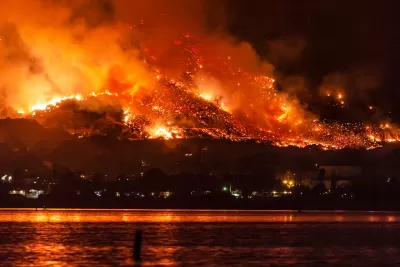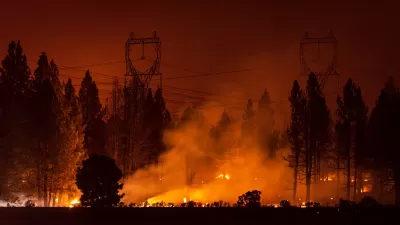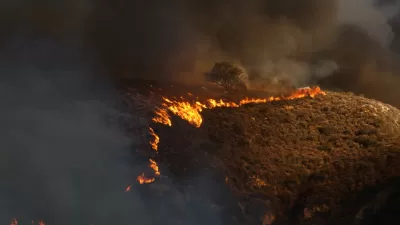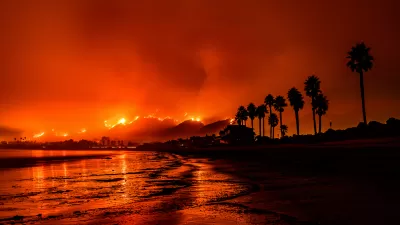Summer is just beginning, but wildfires in California have already burned more than 90,000 acres.

California's wildfire season has started intensely, with over 90,000 acres burned by June 20, stretching firefighting resources thin and prompting evacuations. As reported by Grace Toohey, perilous weather conditions, including strong winds, low humidity, and high temperatures, have fueled more than 30 wildfires from Los Angeles County to Colusa County, with two major fires rapidly surpassing 15,000 acres each. This early surge in wildfire activity is causing concern among officials about the upcoming hotter months and the potential for even more fires.
The National Weather Service has issued excessive heat warnings across much of Southern California, predicting temperatures up to 105 degrees, exacerbating the risk of wildfires. The recent fires have primarily been grass fires driven by windy conditions, with significant burns reported in the Post Fire near Gorman and the Sites Fire in Colusa County. Despite fewer overall fires compared to the five-year average, the acreage burned is significantly higher, indicating that the landscape is primed for rapid fire spread.
Experts like research ecologist Chad Hanson emphasize that climate change and weather patterns are influencing wildfire behavior, with higher global temperatures and extreme weather conditions adding challenges to fire suppression efforts. While not all wildfires are detrimental, as many ecosystems depend on post-fire habitats, the primary concern is the impact on human communities. Officials are advocating for a focus on protecting human life and development and urging the public to take preventive measures to reduce wildfire risks.
FULL STORY: California wildfires have already burned 90,000 acres, and summer is just beginning

Alabama: Trump Terminates Settlements for Black Communities Harmed By Raw Sewage
Trump deemed the landmark civil rights agreement “illegal DEI and environmental justice policy.”

Planetizen Federal Action Tracker
A weekly monitor of how Trump’s orders and actions are impacting planners and planning in America.

The 120 Year Old Tiny Home Villages That Sheltered San Francisco’s Earthquake Refugees
More than a century ago, San Francisco mobilized to house thousands of residents displaced by the 1906 earthquake. Could their strategy offer a model for the present?

In Both Crashes and Crime, Public Transportation is Far Safer than Driving
Contrary to popular assumptions, public transportation has far lower crash and crime rates than automobile travel. For safer communities, improve and encourage transit travel.

Report: Zoning Reforms Should Complement Nashville’s Ambitious Transit Plan
Without reform, restrictive zoning codes will limit the impact of the city’s planned transit expansion and could exclude some of the residents who depend on transit the most.

Judge Orders Release of Frozen IRA, IIJA Funding
The decision is a victory for environmental groups who charged that freezing funds for critical infrastructure and disaster response programs caused “real and irreparable harm” to communities.
Urban Design for Planners 1: Software Tools
This six-course series explores essential urban design concepts using open source software and equips planners with the tools they need to participate fully in the urban design process.
Planning for Universal Design
Learn the tools for implementing Universal Design in planning regulations.
Clanton & Associates, Inc.
Jessamine County Fiscal Court
Institute for Housing and Urban Development Studies (IHS)
City of Grandview
Harvard GSD Executive Education
Toledo-Lucas County Plan Commissions
Salt Lake City
NYU Wagner Graduate School of Public Service





























